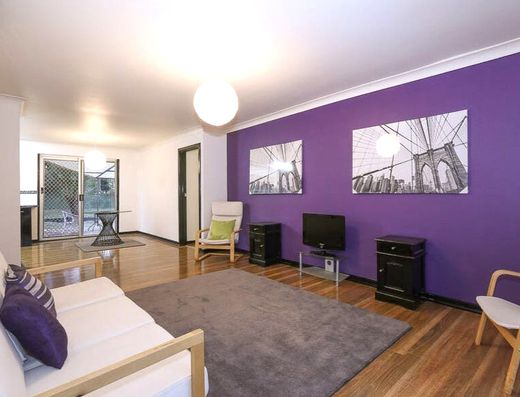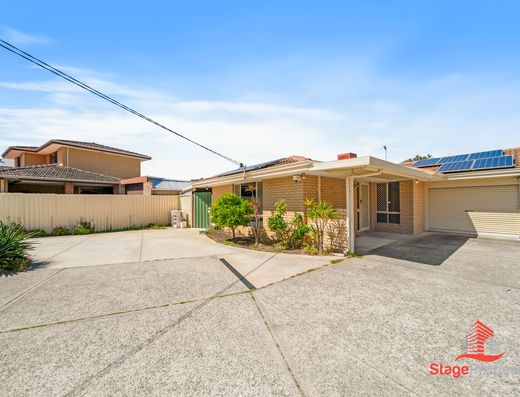Why banks and agents value your home differently
Have you ever wondered why a home can be listed for one price, valued at another, lender-valued at another still, and then sold for a figure that leaves everyone scratching their heads?
How can one property have umpteen different prices? How do you know which price is right? Let’s walk through a hypothetical home and see if we can shine a light on the price confusion.
Case study example of different values for the same property
The Smith family owns a home in the city, but is keen on a sea change and plan to buy a property on the coast.
They refinance their current home loan to release the money to pay for a deposit on their next home.
They also ask for a price appraisal from a local real estate agent before listing their home online. It sells under the hammer at auction.
Meanwhile, their local council rates notice arrives in the mail and they must pay these rates before leaving their residence.
The Smiths family home now has five different ‘prices’, including her personal assessment of its real value. She wonders if she somehow sold for the wrong price.
|
Value amount |
|
|
Bank value |
$500,000 |
|
Agent appraisal value |
$500-,000 - $600,000 |
|
Sale value |
$630,000 |
|
Local council value |
$480,000 |
|
Homeowner's price |
$560,000 |
Why do these variations exist?
1. The bank value
If your home is or will be mortgaged, your lender will almost certainly need to value it. This gives the lender confidence your asset offers ample security against the borrowed amount if, for some reason, you cannot pay your mortgage and the lender must sell the property to recoup its debt.
It is therefore unsurprising that a bank valuation will usually be conservative, sometimes 10%-20% less than the current selling prices of comparable homes.
In this case, the Smiths’ bank assesses their home and decides its value is $500,000.
2. The selling agent’s price appraisal
Real estate agents are commonly asked to assess the market value of your property. This will often help a vendor decide who to engage to sell their home.
Before being chosen to act on a vendor’s behalf, an agent will typically inspect the home and research comparable sales in the local suburb or town, before producing written feedback and a sale price estimation such as “between $X and $X” or “from $X”.
This price guide is useful to a vendor when deciding what price to advertise.
The Smiths’ agent conducts an inspection of their home and, based on the current strong demand for three-bedroom homes under 1km from the local primary school, estimates it will sell for $550,000 to $600,000.
3. The sale price
Regardless of whether the property is sold via private sale or auction, the price the successful buyer is prepared to pay on the day the contract is signed is the property’s legally binding sale price.
Hot markets, high demand in certain areas and a big turnout on auction day can all have an effect on the final sale price for a property.
In our scenario, a big crowd attends, including eight enthusiastic buyers. Bidding is active right from the start and the price quickly surpasses even the agent's optimistic appraisal. The hammer falls on a bid of $630,000.
4. The local council’s valuation
Every year, when a property owner gets their local municipal rates bill, they will see on the notice a Capital Improved Value (CIV), site value, net annual value (NAV), and/or gross rental value (GRV).
These figures are calculated using varied methodologies including comparable sales data and the bi-annual figures from the State Valuer-General’s offices.
Councils, and water and fire authorities, use these figures to work out how much homeowners owe them for using their infrastructure and services.
According to the Smiths’ rates notice, their property has a CIV of $480,000 – the value of the land and any capital additions such as a house – and a Site Value of $280,000 – land value excluding buildings.
5. The homeowners’ price
Every property owner will have a 'wish price' in their minds when they come to sell, and most will have a ‘this-is-the-lowest-I-will-go’ price, too. Both of these prices are based on a home’s location, aspect and features, but sometimes vendor price expectations are also influenced by emotion rather than facts.
Mr and Mrs Smith really didn’t know how to price their much-loved family home when they came to selling it.
They had been studying price data for their neighbourhood, which showed a median price of $510,000 for three-bedroom houses in their suburb over the past 12 months.
Mrs Smith thought their home’s sale price should reflect the median price figure, but Mr Smith thought the new pool they’d installed last year should add at least another $50,000 to their home’s sale price.
In the end, the market will usually decide a property's value by what a buyer is willing to pay for it at auction or through private sale.
What should I do if the bank valuation is lower than the purchase price?
Banks tend to err on the side of caution when valuing a property, as they need to know that they could recover their money from the sale of the property, in the event that you default on your loan.
Consequently, it's not uncommon for a bank to value a property at less than the purchase price – especially if the property was bought off the plan before the beginning of a market downturn.
When this happens, losing your hard-earned deposit is a real danger, as the bank might not lend you enough money to pay for the house you just bought.
Should you find yourself in this position, though, there are a number of things you can do to save the deal.
1. Challenge the valuation
Some lenders will let you challenge their valuation if you think that it is too low, but you'll need to provide evidence to support your claim, such as records of recent comparable sales in the area.
Ask your lender for a copy of the valuation report to check for errors, and, if the valuer didn't inspect the inside of the property, ask for a more thorough valuation, on the basis that the quality of the interiors add significant value to the property.
If your lender isn't particularly open to the idea of a second valuation, offering to cover the costs of one might convince them to reconsider.
2. Apply to another lender
This option is typically more successful than the first, as there's often a fair bit of variation between valuations.
3. Borrow more money from your current lender
If the bank values the property at less than the purchase price, you should still be able to go ahead with the deal, so long as you don't need to lend more than 95% of the property's lender-assessed value.
However, if the low valuation means that you now need to borrow more than 80% of the property's lender-assessed value, you will have to pay for lenders mortgage insurance (LMI).
For example, let's say you save a $180,000 deposit, agree to buy a house for $600,000, and the bank values this home at $500,000. In this case, you'd need to borrow $420,000, which would mean your loan to value ratio (LVR ($420,000/$500,000) was 84%.
Consequently, you would need to pay LMI, and so it might be worth cancelling your finance application and applying with another lender.
4. Use the equity from another property
If a second valuation comes back with a similarly disappointing result, putting forward equity in another property as security could be a good option, as it will reduce your LVR. In some cases, this could save you from paying LMI; in others, it could be the difference between buying a new home and losing your deposit.
If you are a first-home buyer, you could ask a family member to put forward equity on your behalf, as a guarantor for your loan. Doing so could save you tens of thousands of dollars, but you need to make sure that you have a strong enough relationship with your guarantor to manage the stress of risking their home.
Source: REA








